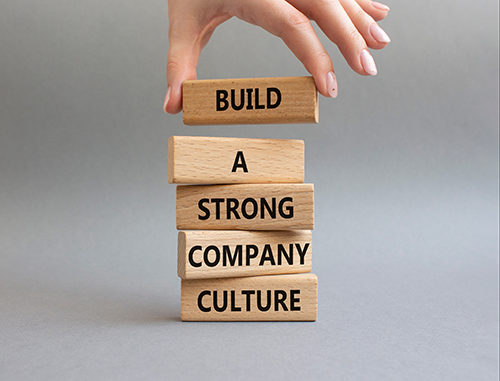
Organizational culture has been defined in numerous ways. To some it’s about what we as a group really value — production, quality, technical excellence, safety, diversity, growth, profit, engagement, goal attainment, efficiency.
From this perspective leaders start by understanding what they value, then develop what they think we should value. Then they develop a strategy to get those values established throughout the organization.
Another view sees culture through the lens of how well the organization functions. This view is built on the basis of a body of research-based knowledge gained over the last 20 years and studied in depth. The core idea is that organizations are built on a cultural infrastructure — an underlying set of factors related to how the organization gets things done.
These factors have been shown to predict results. They have been proven effective at attaining their objectives. When the core of organizational factors is strong, objectives are met faster and easier. When it is weak, everything takes longer and leadership tends to get frustrated.
The factors associated with cultural infrastructure are well known — things like trust, communication, and leadership credibility, as well as teamwork and justice. While it’s recognized that these factors are important, what isn’t well known is how leaders influence these factors.
Leaders create culture by making decisions that influence cultural infrastructure, for better or for worse. Each day leaders make decisions, choosing to do one thing and not another, to treat people this way and not that because of their understanding of what’s the right thing to do — right in and of itself and also right for the business. The extent and quality of leadership decision-making leads to the personal credibility of the leader. Whether they know it or not, this quality determines in large part how effective they are, and what kind of culture they develop.
Leaders don’t wake up in the morning thinking, “Today I’m going to undermine trust in our organization.” Rather, they make decisions, take actions, and respond to situations without realizing the effect they’re having on other people. The way leaders think, the decisions they make, and the behaviors they engage in reverberate through the organization and set a tone, which is first perceived as climate, and then assumed as culture. The principles that underlie their thoughts and actions form the ethos of the organization.
Leaders need an operationalized understanding of how good they are at creating cultural infrastructure — how their leadership is influencing it, for better or worse. It’s one thing to say leadership creates culture. But it’s another to know how to make the culture that they want in the workplace a reality.
An organization recognizes and responds to the integrity of its leaders in many ways. For example, the concept of “justice,” the perception that “We’re an organization that treats people fairly,” is pivotal to each employee’s relationship to the rest of the organization. This perception creates a foundation for working relationships based on trust, effective communication, and teamwork. The ethos of the leadership creates and depends on such a foundation.
This isn’t just a concept but is operationalized by the decisions leaders make every day — selection of leaders, how they approach acquisitions, budget cuts, new facilities and products — and the wide range of decisions made that affect their people. To the extent to which these decisions are made fairly and without bias is the extent to which the leader and the organization gains or loses the credibility it must have to form a strong culture.
However, the implications of organizational culture, the perceptions of it, the practice of it, and the talk about it, aren’t well understood, as evidenced by the frequency with which leaders unknowingly do and say things that have unwanted effects on the organization’s culture. To change this requires that every leader becomes sensitive to the influence of the decisions they make.
The work leaders do to create a culture of excellence is not mere problem solving but is right in the mainstream of how leaders create a positive cultural infrastructure in their organization.

